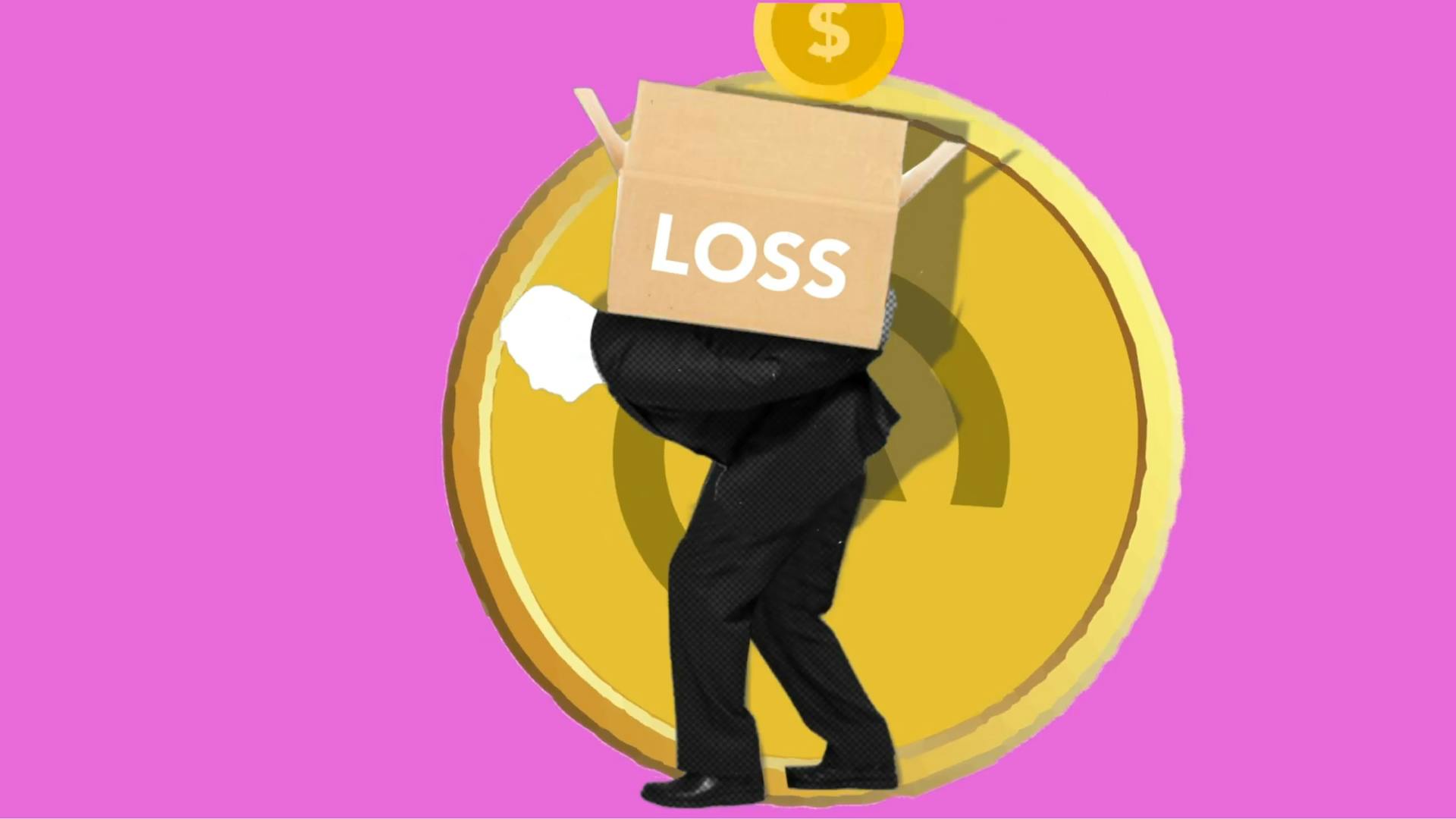
Undercapitalization can be a major obstacle for small businesses and entrepreneurs. It occurs when a business doesn't have enough capital to cover its expenses, leading to financial struggles.
This can be due to a variety of factors, such as poor financial planning or unexpected expenses. Undercapitalization can result in delayed payments, reduced productivity, and even business closure.
A business with insufficient capital may struggle to pay its employees, suppliers, and other creditors on time. This can damage its reputation and relationships with key stakeholders.
Undercapitalization can have long-term consequences, including reduced creditworthiness, lower sales, and decreased competitiveness.
Broaden your view: Does Life Insurance Cover Burial Expenses
Causes of Under-Capitalization
Under-capitalization is a common issue that can arise in businesses, and it's essential to understand its causes to avoid it. One of the primary causes of under-capitalization is underestimating earnings, which can lead to a company being capitalized accordingly, but ultimately finding itself in a state of under-capitalization when actual earnings turn out to be much more than anticipated.
You might like: Retained Earnings in Cash Flow Statement
Using a low capitalization rate is another cause of under-capitalization. This can happen when a company employs a relatively lower capitalization rate, which can lead to a company being under-capitalized.
Deflationary conditions can also lead to under-capitalization. During a recession, assets are brought at exceptionally low prices, which bear no relation to their income-producing captivity. As the period of recession abates, the earning position of the company trends to improve, but the book value of assets remains the same, leading to under-capitalization.
Conservative dividend policy is not a cause of under-capitalization, but rather a benefit. A company following a conservative dividend policy builds up substantially large funds available for replacement of obsolete assets and for development and expansion purposes, which improves earning position.
Here are some common causes of under-capitalization:
- Financing growth with short-term capital, rather than permanent capital
- Failing to secure an adequate bank loan at a critical time
- Failing to obtain insurance against predictable business risks
- Adverse macroeconomic conditions
- Underestimation of earnings
- Using a low capitalization rate
- Deflationary conditions
Capital Sources
Establishing a line of credit is a solid approach to assuring capital, as it allows business owners to borrow against it even if it's not needed, and then pay back the loan. This repeated process can help expand capital when needed.
A business may acquire capital through various means, including re-investing earnings, assuming debt, or selling equity. According to Van Horn, the least expensive ways to raise capital are to finance from cash flow and improve cash flow through regular invoicing and collecting overdue receivables.
Debt is more expensive, with the cost of debt lowest with secured, long-term loans or personal savings, and highest with unsecured loans, credit card loans, and cash advances. Equity financing is the most expensive option, diluting the value of existing owners' shares in the business.
Here are some ways to raise capital, listed by cost:
- Financing from cash flow
- Improving cash flow through regular invoicing and collecting overdue receivables
- Secured, long-term loans or personal savings
- Unsecured loans, credit card loans, and cash advances
- Equity financing (most expensive)
Capital Sources
Acquiring capital for your business can be a challenge, but there are several options to consider. A manual on collecting capital by CPA David Levinson suggests establishing a line of credit and borrowing against it, even if it's not needed, to expand your capital when you need it.
You can acquire capital through re-investment of earnings, assuming debt, or selling equity. This can be done through various means, including regular invoicing and collecting overdue receivables to improve cash flow.
The least expensive ways to raise capital are to finance from cash flow and to improve cash flow through regular invoicing, collecting overdue receivables, stretching payables without incurring interest or penalties, renegotiating loans for lower interest rates, and exploiting trade discounts.
Debt is more expensive than financing from cash flow, with the cost of debt being lowest with secured, long-term loans or personal savings, higher with unsecured loans, credit card loans, and cash advances, and highest with factoring accounts receivable.
Equity financing is the most expensive option, and it dilutes the value of existing owners' shares in the business. It may be the only option if a business has good prospects but insufficient assets to secure loans.
Here are the different types of capital sources and their costs:
By understanding these capital sources and their costs, you can make informed decisions about how to acquire the capital you need to grow your business.
Financing Fees
Financing fees can be a significant expense for developers, and it's essential to account for them in your budget. Most developers take out loans to cover development costs, which can then be paid back over time using their returns.
Loans are not free, and you'll need to consider financing fees. These fees may seem easy to track if you're taking out one substantial loan, but multiple loans throughout the project's timeline can make accounting for them critical.
You'll also need to account for interest on monthly payments. This can add up quickly, so it's crucial to factor it into your budget.
For another approach, see: Islamic Financing in Canada
Consequences of Under-Capitalization
Undercapitalization can have far-reaching consequences for a company, its shareholders, and society as a whole. Undercapitalization can lead to a company's financial struggles, which can result in its management being replaced.
For shareholders, undercapitalization can be beneficial as they receive high dividend income regularly. This is because the share price of undercapitalized companies tends to rise, causing shareholders' investments to appreciate significantly.
Undercapitalization can also have a positive impact on society, as it encourages new entrepreneurs to start new ventures and existing ones to expand. This boosts industrial production, allowing consumers to purchase a variety of products at relatively cheaper rates.
In fact, undercapitalization can help mitigate the suffering of unemployed persons by creating more job opportunities. This is because the establishment of new firms and the expansion of existing ones can lead to an increase in employment opportunities.
Here's a summary of the consequences of undercapitalization:
- Company: Financial struggles and potential management replacement
- Shareholders: High dividend income and appreciating share price
- Society: Encourages entrepreneurship, boosts industrial production, and creates job opportunities
Financial Analysis and Planning
A financial feasibility analysis can provide a breakdown of all projected costs, projected cash flow, and predicted return on investment (ROI), helping you determine if a project is worth investing in.
By analyzing these financial aspects, you'll be able to determine if the ROI is less than the projected costs, which may indicate that the project is not feasible.
A thorough financial feasibility analysis can help provide a detailed breakdown of the project's costs, allowing you to plan for success with greater accuracy and avoid potential undercapitalization.
Explore further: Working Capital Management Decisions Help to Determine
This can be especially crucial for real estate development projects, where undercapitalization can delay the project, increase costs, and threaten its completion.
To predict the eventual ROI of a project, you'll need to do thorough market research to accurately calculate the numbers.
If you don't calculate the numbers accurately, you could end up undercapitalized in the future, especially if you're undertaking multiple projects around the same time.
A financial feasibility analysis can help you determine how much is needed at each stage of the project, allowing you to know what kind of financing will be required.
This can help prevent undercapitalization, a real threat to your existing and future real estate development projects.
Check this out: Capital Budgeting Definition
Project Costs and Funding
Determine the project's costs by breaking down development costs from start to finish. This includes primary costs such as construction, land preparation, and financing.
Predicting cash flow projections is crucial to avoid undercapitalization. Developers typically obtain financing for various stages of development, so calculate your cash flow by comparing income from other ventures to investments in the project.
Intriguing read: Free Cash Flow to Equity
Account for potential negative cash flow, which can occur when construction costs exceed revenue from other ventures. This can lead to undercapitalization, so predict negative cash flow ahead of time to secure necessary funding.
Construction costs include building construction, preparing the land for construction, and potential issues or delays. Earthworks, paving, and landscaping are all factors to consider when planning for construction costs.
Consider reading: On the Cash Flow Statement Does Capex Include Ppe
Frequently Asked Questions
What are the symptoms of undercapitalization?
Undercapitalization can manifest in several ways, including consistently low or negative cash flow, overreliance on short-term borrowing, delayed payments, and an inability to capitalize on opportunities. These symptoms often stem from a high debt-to-equity ratio, which can be a warning sign of financial strain
What is the difference between overcapitalization and undercapitalization?
Overcapitalization occurs when a business has too much capital, wasting resources, while undercapitalization happens when a business lacks sufficient funds to operate, pay debts, and grow. Understanding the difference between these two conditions is crucial for a business's financial health and success.
Sources
- https://en.wikipedia.org/wiki/Undercapitalization
- https://www.mbaknol.com/financial-management/under-capitalization/
- https://www.entrepreneur.com/encyclopedia/undercapitalization
- https://redthomes.com/blog/avoiding-undercapitalization-with-a-financial-feasibility-study/
- https://thecontractorsresourcecenter.com/dont-let-undercapitalization-affect-construction-company/
Featured Images: pexels.com
